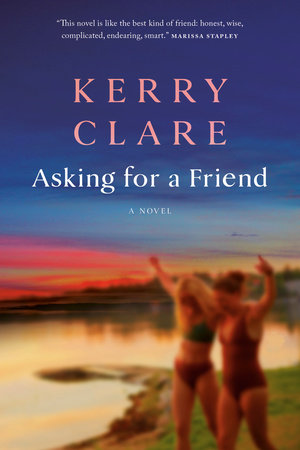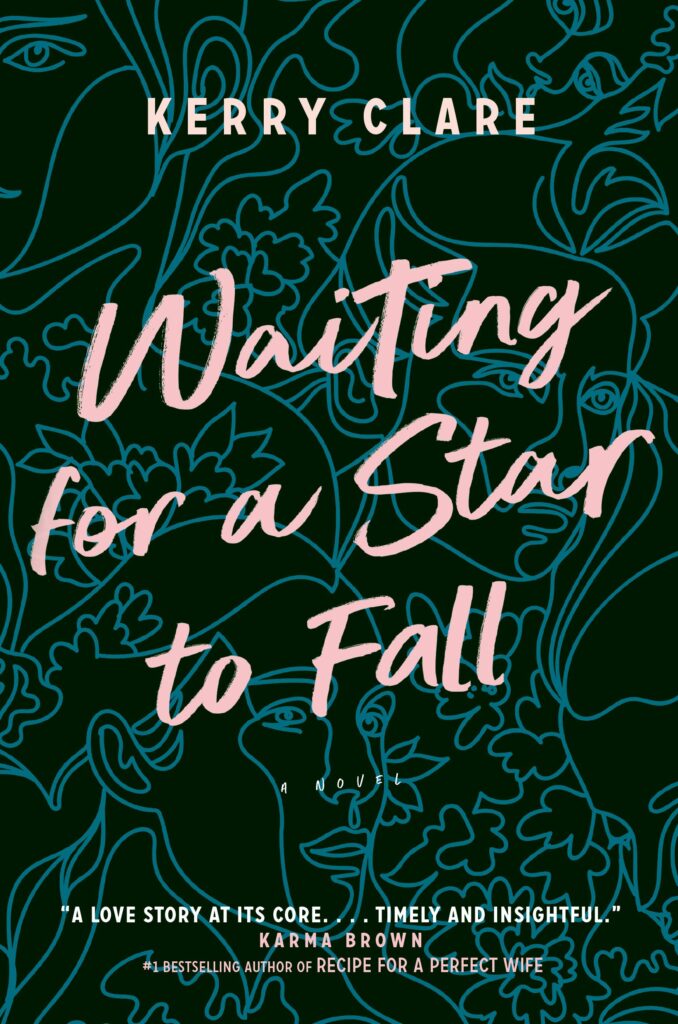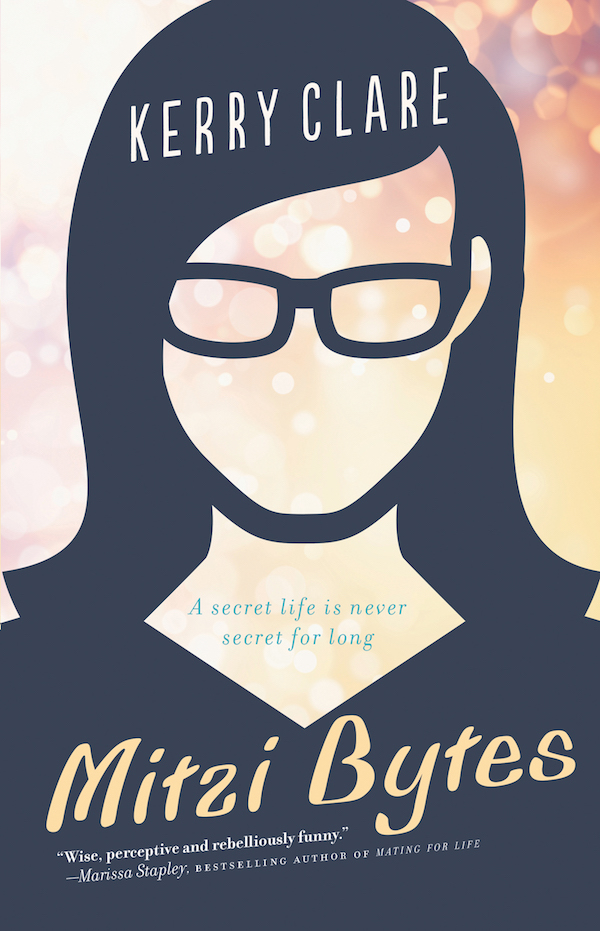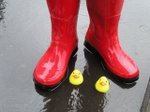July 21, 2009
Links
New (to me) blogs on the horizon! Such as The Literary Type, the official blog of The New Quarterly. TNQ is always good, and I’m sure we’ll see the same quality of work online. Check out the first post, “On Joining the Conversation”, about how online is where literary people are talking these days. I’m also obsessed with the blog Making It Lovely, which is sort of strange because it’s about interior design, but also about design on a broader scale and its creator is brilliant. And join our Facebook group, [re]use your mug. As some of you can’t help but know, our city is in the midst of a garbage strike, and trash has piled up in the streets. We’ve posted pictures of the mess in our gallery— note how much of it is cups, yes? A grand opportunity (in disguise) for us to realize how much less garbage we’d produce if we cut the disposible cups out of our lives. I, for one, had taken the pledge.
July 19, 2009
Something Amazing
Something amazing happened during these last couple of weeks, as our baby girl began a transformation from rage incarnate into an actual person. What is even more amazing, however, is the way in which her parents have actually begun to figure out how she works, what she needs, how to respond to her, and keep her happy for as long as possible (which is sometimes up to an hour or two). And watching her explore to the world now is absolutely one of the most fascinating experiences I’ve ever had, and I really can’t get enough of it. Baby can get enough of it, however, and at this moment, due to having been horribly overtired to the point of hysteria, Harriet is comfortably asleep in her swing. For now…
And so today is a good time for me to start reading The Scientist in the Crib (as recommended by Steph at Crooked House). I am looking forward to a book about babies that does not purport to be a “guide”, except perhaps one to understanding. And, of course, because man cannot subsist on non-fiction alone, I’m also reading my former classmate Lauren Kirshner‘s novel Where We Have to Go, which fits in well with all the rest if I regard it as a parenting anti-guide.
The best news is that I own a computer again, and so this week’s project is a little life here at Pickle Me This. Though I really can’t be held to anything these days at all.
July 16, 2009
Good Text
From the Descant blog, Katie Franklin on her feminist erotic bookclub and desire for books: “In The Pleasure of the Text Roland Barthes insists, “the text is a fetish object, and the fetish desires me” (Barthes 27). As a librarian I see how the public forms relationships with their books. Patrons come in exacerbated if the paperback they’ve put on hold hasn’t come in yet: “What do you mean my book hasn’t come in? I need it now!” Such outbursts of desire, which may seem more natural in the bedroom, are often common expressions at the circulation desk of the library. However, I don’t blame them for their yearnings. Everyone is entitled to some good text.”
July 16, 2009
A Perfectly Adjusted Organism
“Most of life is so dull that there is nothing to be said about it, and the books and talk that would describe it as interesting are obliged to exaggerate, in the hope of justifying their own existence. Inside the cocoon of work or social obligation, the human spirit slumbers for the most part, registering the distinction between pleasure and pain, but not nearly as alert as we pretend. There are periods in the most thrilling day during which nothing happens, and though we continue to exclaim, ‘I do enjoy myself’ or ‘I am horrified’ we are insincere. ‘As far as I feel anything, it is enjoyment, horror’– it’s no more than that, really, and a perfectly adjusted organism would be silent.”– from E.M. Forster’s A Passage to India
July 13, 2009
Bits and pieces
I am so excited to read the final volume of the Anne books— I wasn’t aware such a volume existed, and wonder if it’s actually finished, as its form sounds quite fragmentary. But no less, my favourite Anne books were the last bunch (House of Dreams, Rainbow Valley, Anne of Ingleside and Rilla of Ingleside), precisely for their dealings with “serious” and “darker” themes this book supposedly contends with– I couldn’t help but think about Anne’s stillborn baby in light of Montgomery’s own experiences, Leslie Moore’s marriage, WW1, the pied piper and Walter’s death, when Anne fears Gilbert has ceased to love her, etc. Guardian blogger discusses the “dark side” of Green Gables. Bits of A.S. Byatt’s The Children’s Book called Rainbow Valley and Rilla of Ingleside to mind, actually, and Dovegreyreader interviews Byatt here. Speaking of interviews, Rebecca Rosenblum answers 12 or 20 questions. And speaking of nothing at all, 30 Rock ripped off the Muppet Show, why our federal tax dollars should not fund jazz, and Russell Smith on baby slings (he says do avoid the polyester).
July 13, 2009
Fiction inspired by fiction
How one book leads to another is something I’ve always found fascinating. I’m now reading A Passage to India, as inspired by Kate Christensen’s Trouble and its Marabar Caves reference. Kate Sutherland asked about this recently (on FB, I think): fiction reading inspired by fiction reading, and she cited reading The Epic of Gilgamesh because of The Girls Who Saw Everything. I know that I watched Vertigo after reading Francine Prose’s Goldengrove, but can’t think of any other fiction I’ve read directly inspired by fiction off the top of my head. I’ve been meaning to get around to reading Great Expectations as inspired by Mister Pip, but as I haven’t yet, I don’t think it counts.
July 13, 2009
Relearning
Harriet is seven weeks tomorrow, and some semblance of regular life has returned to us. We spent our weekend doing things we would have done without her– Saturday bbq at friends’ house, Sunday brunch and ice cream. All modified somewhat, of course, by her presence (i.e. brunch at mid-afternoon), but definitely doable, and it’s wonderful. It’s as though since she’s been born, I’ve had to relearn how to live in the world, because it’s so different now, but we’re really beginning to figure it out. Which is made very easy by Harriet’s firm understanding of nighttime. She gets up once to eat, but otherwise we keep very civilized hours, and are all the better for it. She’s a good baby, albeit a quite serious and/or grumpy one– we’ve seen a few smiles, but they’ve been all too fleeting. And she only ever laughs when she’s asleep, but really, I’ll take any laughs at all.
July 9, 2009
Awful Library Books
 My friend K. (of the unfortunately now-defunct Pop-Triad) sent me a link to my favourite website of the day, Awful Library Books, which includes texts such as the one whose cover is seen here. The site features books that might be listed as “required weeding” from American public libraries, and I enjoy the bloggers’ commentary as well (“I think the guy in a wheelchair is saying to the woman, “Do I really have to dress like Mr. Rogers?”). You’re also invited to send your own submissions.
My friend K. (of the unfortunately now-defunct Pop-Triad) sent me a link to my favourite website of the day, Awful Library Books, which includes texts such as the one whose cover is seen here. The site features books that might be listed as “required weeding” from American public libraries, and I enjoy the bloggers’ commentary as well (“I think the guy in a wheelchair is saying to the woman, “Do I really have to dress like Mr. Rogers?”). You’re also invited to send your own submissions.
July 8, 2009
Harriet joins the library
 Yesterday, at the tender age of six weeks, Harriet became a card-carrying member of the Toronto Public Library. She slept through the ceremony, but did seem to enjoy reading Eco Babies Are Green last evening, and seemed incredibly impressed and grateful when I explained to her how lucky we are to live in a city whose fantastic library resources are available to everybody for free. She also liked the Raffi CD we borrowed (and did you know that he is Victoria College’s most illustrious drop-out?).
Yesterday, at the tender age of six weeks, Harriet became a card-carrying member of the Toronto Public Library. She slept through the ceremony, but did seem to enjoy reading Eco Babies Are Green last evening, and seemed incredibly impressed and grateful when I explained to her how lucky we are to live in a city whose fantastic library resources are available to everybody for free. She also liked the Raffi CD we borrowed (and did you know that he is Victoria College’s most illustrious drop-out?).
July 7, 2009
The Wedding
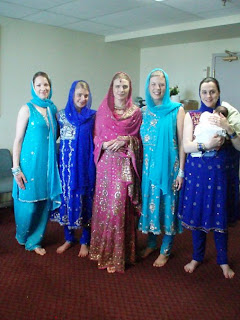 Harriet is in the midst of her six weeks’ growth spurt, which means that she’s permanently attached to me, who’s attached to the couch or bed most of the time, and so it goes. Luckily temporary. We’re actually doing very well here, enjoying support from lactation consultants in particular! And things are not as dire as my previous post suggested– that was early days, and week by week, life has been exponentially better. This weekend was a particularly large milestone, as we attended my best friend Jennie’s wedding. It was just a modest do, with a 500+ guest list. We’d been a wee bit terrified at the prospect with such a little baby, but baby behaved better than she ever had in her whole life (and since), spending most of the weekend eating, sleeping and being adorable. With her daddy’s support, I was able to pull off most of my bridesmaidly duties, and moreover had an enormous amount of fun. It was great to be away from home, to drive again, to stay in a hotel and feed baby in odd places– makes everything else seem so much more possible. And the wedding was really a spectacular event. As I’m between computers at the mo, I can’t upload my own photos, but I stole this one from my friend Britt’s Facebook– in spite of our outfits, we Bridesmaids did stand out a bit at this Sikh wedding, but really, check out the bride. She was so incredibly beautiful, gracious, and radiant, and she had her new husband absolutely belong together. I’m thrilled for them, and for me who got to be there.
Harriet is in the midst of her six weeks’ growth spurt, which means that she’s permanently attached to me, who’s attached to the couch or bed most of the time, and so it goes. Luckily temporary. We’re actually doing very well here, enjoying support from lactation consultants in particular! And things are not as dire as my previous post suggested– that was early days, and week by week, life has been exponentially better. This weekend was a particularly large milestone, as we attended my best friend Jennie’s wedding. It was just a modest do, with a 500+ guest list. We’d been a wee bit terrified at the prospect with such a little baby, but baby behaved better than she ever had in her whole life (and since), spending most of the weekend eating, sleeping and being adorable. With her daddy’s support, I was able to pull off most of my bridesmaidly duties, and moreover had an enormous amount of fun. It was great to be away from home, to drive again, to stay in a hotel and feed baby in odd places– makes everything else seem so much more possible. And the wedding was really a spectacular event. As I’m between computers at the mo, I can’t upload my own photos, but I stole this one from my friend Britt’s Facebook– in spite of our outfits, we Bridesmaids did stand out a bit at this Sikh wedding, but really, check out the bride. She was so incredibly beautiful, gracious, and radiant, and she had her new husband absolutely belong together. I’m thrilled for them, and for me who got to be there.
New computer should arrive this week or next, and I expect regularish posting will resume then.
